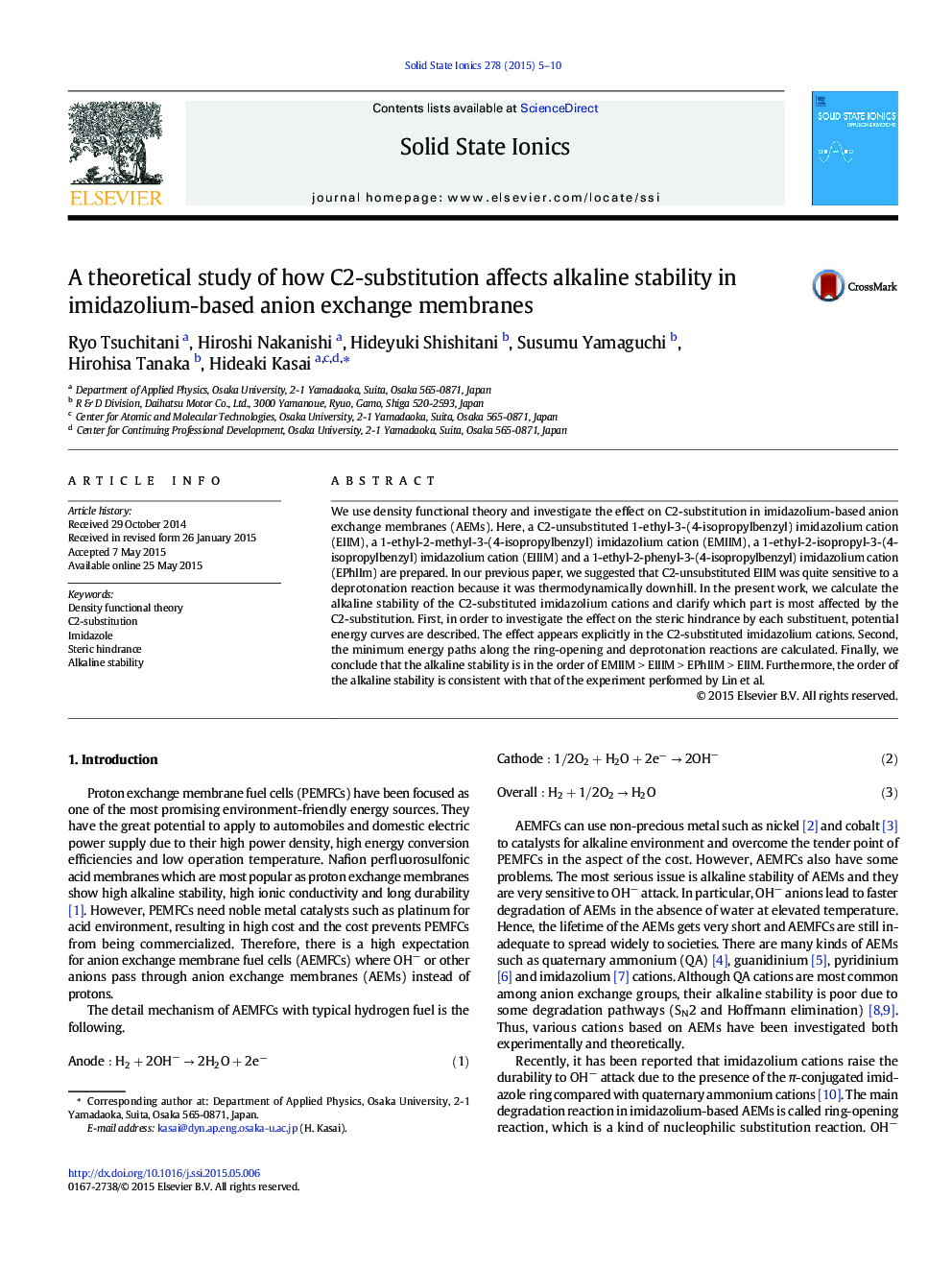| Article ID | Journal | Published Year | Pages | File Type |
|---|---|---|---|---|
| 1295688 | Solid State Ionics | 2015 | 6 Pages |
•Theoretical analyses of imidazolium-based anion exchange membranes•We focus on how C2-substitution affects alkaline stability.•C2-substitution can enhance the alkaline stability of deprotonation reaction.•Substitution by a methyl group is best to hinder hydroxide attack.
We use density functional theory and investigate the effect on C2-substitution in imidazolium-based anion exchange membranes (AEMs). Here, a C2-unsubstituted 1-ethyl-3-(4-isopropylbenzyl) imidazolium cation (EIIM), a 1-ethyl-2-methyl-3-(4-isopropylbenzyl) imidazolium cation (EMIIM), a 1-ethyl-2-isopropyl-3-(4-isopropylbenzyl) imidazolium cation (EIIIM) and a 1-ethyl-2-phenyl-3-(4-isopropylbenzyl) imidazolium cation (EPhIIm) are prepared. In our previous paper, we suggested that C2-unsubstituted EIIM was quite sensitive to a deprotonation reaction because it was thermodynamically downhill. In the present work, we calculate the alkaline stability of the C2-substituted imidazolium cations and clarify which part is most affected by the C2-substitution. First, in order to investigate the effect on the steric hindrance by each substituent, potential energy curves are described. The effect appears explicitly in the C2-substituted imidazolium cations. Second, the minimum energy paths along the ring-opening and deprotonation reactions are calculated. Finally, we conclude that the alkaline stability is in the order of EMIIM > EIIIM > EPhIIM > EIIM. Furthermore, the order of the alkaline stability is consistent with that of the experiment performed by Lin et al.
